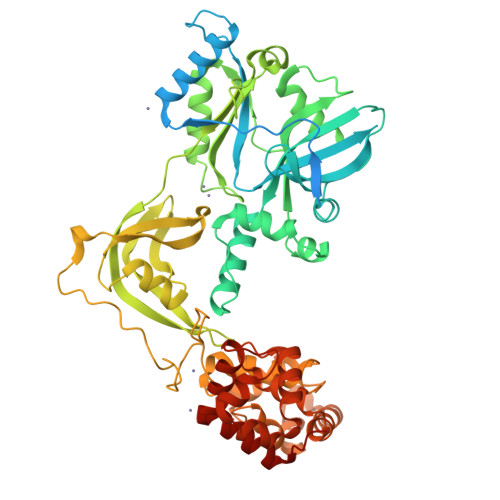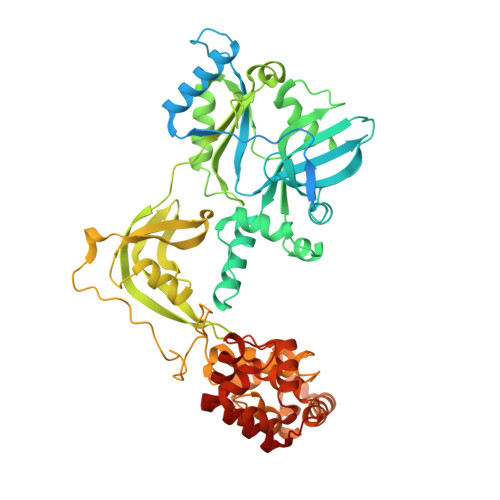Structure/function studies of the NAD + -dependent DNA ligase from the poly-extremophile Deinococcus radiodurans reveal importance of the BRCT domain for DNA binding.
Fernandes, A., Williamson, A., Matias, P.M., Moe, E.(2023) Extremophiles 27: 26-26
- PubMed: 37712998
- DOI: https://doi.org/10.1007/s00792-023-01309-z
- Primary Citation of Related Structures:
8AK4 - PubMed Abstract:
Bacterial NAD + -dependent DNA ligases (LigAs) are enzymes involved in replication, recombination, and DNA-repair processes by catalyzing the formation of phosphodiester bonds in the backbone of DNA. These multidomain proteins exhibit four modular domains, that are highly conserved across species, with the BRCT (breast cancer type 1 C-terminus) domain on the C-terminus of the enzyme. In this study, we expressed and purified both recombinant full-length and a C-terminally truncated LigA from Deinococcus radiodurans (DrLigA and DrLigA∆BRCT) and characterized them using biochemical and X-ray crystallography techniques. Using seeds of DrLigA spherulites, we obtained ≤ 100 µm plate crystals of DrLigA∆BRCT. The crystal structure of the truncated protein was obtained at 3.4 Å resolution, revealing DrLigA∆BRCT in a non-adenylated state. Using molecular beacon-based activity assays, we demonstrated that DNA ligation via nick sealing remains unaffected in the truncated DrLigA∆BRCT. However, DNA-binding assays revealed a reduction in the affinity of DrLigA∆BRCT for dsDNA. Thus, we conclude that the flexible BRCT domain, while not critical for DNA nick-joining, plays a role in the DNA binding process, which may be a conserved function of the BRCT domain in LigA-type DNA ligases.
Organizational Affiliation:
Instituto de Tecnologia Química e Biológica António Xavier, Universidade NOVA de Lisboa, Oeiras, Portugal.




















